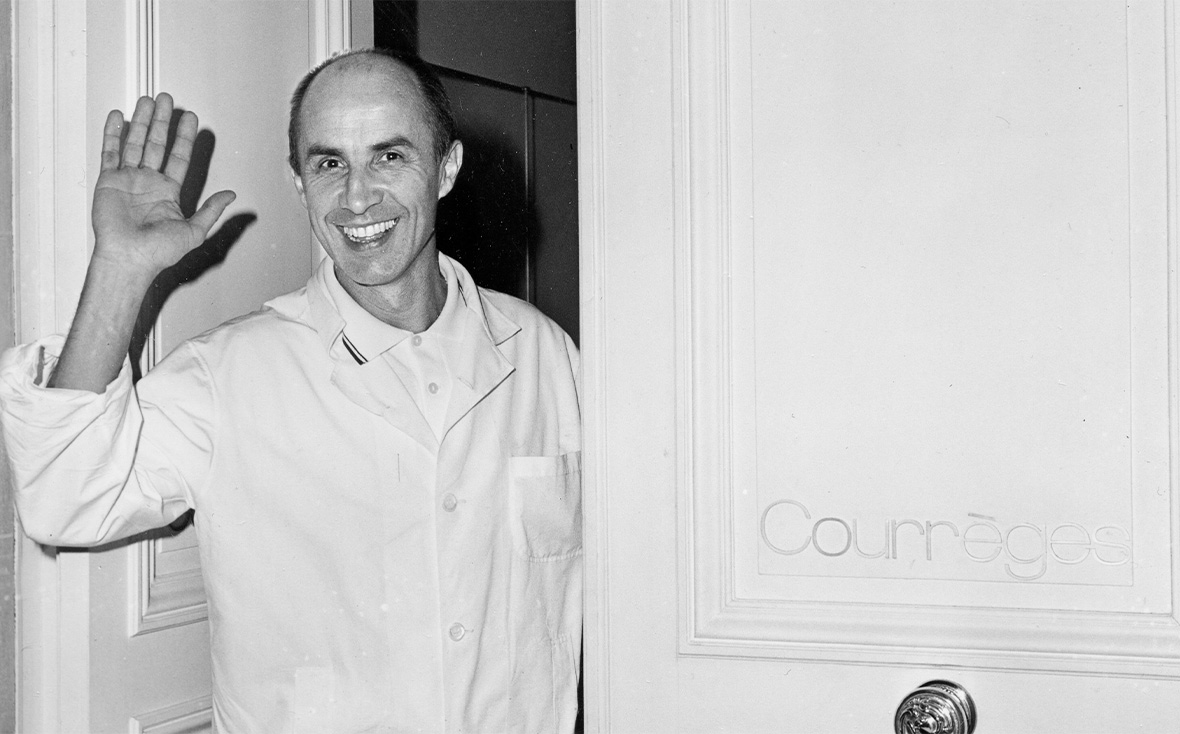André Courrèges

André Courrèges was the original futurist of fashion. Rising out of the post-war shadow, his work in the 1960s put a bold, unforgettable stamp on the decade, redefining how the world dressed. Courrèges cut his teeth under the master himself, Cristóbal Balenciaga, spending over a decade as an apprentice, learning the art of architectural precision and clean lines. It was here that he also met his partner in creativity and in life, Coqueline Barrière. The two of them would become an inseparable duo, founding the Maison de Courrèges in 1961, forever bound by the vision they shared. The brand’s iconic logo—“AC”—is as much about André and Coqueline as it is about the designer’s initials.
Courrèges was not just making clothes; he was shaping the future. His 1964 “Space Age” collection turned fashion into a playground for the brave, embracing vinyl, metallics, and clean geometric cuts that spoke of rockets and moon landings long before it was mainstream. He made the miniskirt a symbol of freedom, challenging the decade’s status quo alongside Mary Quant. His clothes—thigh-grazing skirts, crisp white ankle boots, and A-line dresses that seemed to defy gravity—were more than garments; they were statements, propelling women into the future. And he didn’t stop there—putting women in pants when it was still a bold move, he wrapped liberation into every seam.
The allure of Courrèges’ radical vision drew a devoted following. Catherine Deneuve, Françoise Hardy, Brigitte Bardot—the icons of the time wore his designs, transforming his looks into cultural touchstones. Jacqueline Kennedy was a regular client, and decades later, his imprint reached a new generation, with Miley Cyrus donning vintage Courrèges for the VMAs in 2015, proving that his vision of the future was never dated. Courrèges understood that fashion wasn’t just about dressing up; it was about looking ahead.
Today, the spirit of André Courrèges is alive and well. Under the guidance of Sebastien Vaillant and Arnaud Meyer, the house continues to evolve, honoring that pioneering vision for sleek minimalism that always looked toward tomorrow. It’s not about nostalgia—Courrèges never wanted to look back. The brand’s modern trajectory, pushing forward with sustainable innovations and streamlined silhouettes, embodies the same progressiveness that defined the designer’s work. Courrèges wasn’t just ahead of his time; he defined what came next.